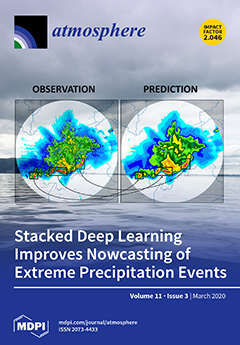Ground-level ozone (O
3) pollution is still one of the priorities and challenges for air pollution control in the Yangtze River Delta (YRD) region of China. Understanding the relationship of O
3 with its precursors and contributions of different sources in O
3 formation is essential for the development of an O
3 control strategy. This study analyzed O
3 sensitivity to its precursors using a box model based on online observations of O
3, non-methane hydrocarbons (NMHCs), nitrogen oxides (NO
x), and carbon monoxide (CO) at an urban site and a suburban site in Shanghai in July 2017. Anthropogenic sources of NMHCs were identified using the positive matrix factorization (PMF) receptor model, and then contributions of different sources in O
3 formation were estimated by the observation-based model (OBM). The relative incremental reactivity (
RIR) values calculated by the OBM suggest that O
3 formation at the urban site was in the NMHC-limited regime, while O
3 formation at the suburban site tended between the transition regime and the NMHC-limited regime. Vehicular emission and liquefied petrochemical gas (LPG) use or aged air mass were found to be the two largest contributors at the urban and suburban sites in July, followed by paint and solvent use, and the petrochemical industry. However, from the perspective of O
3 formation, vehicular emission and paint and solvent use were the largest two contributors at two sites due to the higher
RIR values for paint and solvent use. In addition, the influence of transport on O
3 sensitivity was identified by comparing O
3 sensitivity at the suburban site across two days with different air mass paths. The result revealed that O
3 formation in Shanghai is not only related to local emissions but also influenced by emissions from neighboring provinces. These findings on O
3–NMHC–NO
X sensitivity, contributions of different sources in O
3 formation, and influence of transport could be useful for O
3 pollution control in the YRD region. Nevertheless, more quantitative analyses on transport and further evaluation of the uncertainty of the OBM are still needed in future.
Full article





